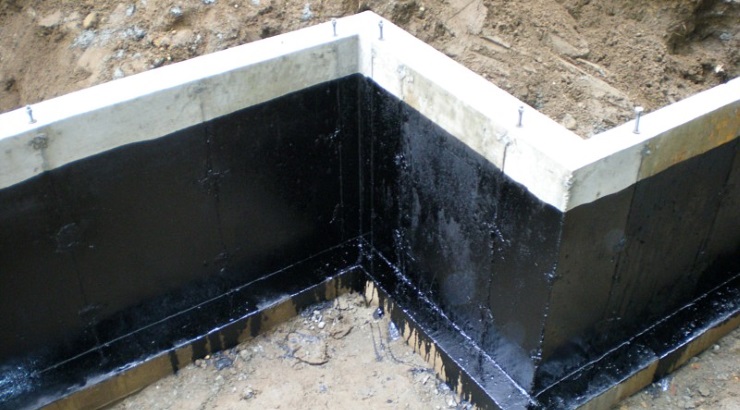Self Building
Steps to Waterproofing Your Foundation Like a Pro
Easy-to-follow, step-by-step guide to waterproofing a foundation.

Waterproofing is sealing an item to make it water-resistant so that it can endure wet environments under specified conditions.
In building and construction, waterproofing is a key procedure to prevent water leakage in basements, roofs, and foundations, among other areas.
This article explores waterproofing for the foundation and basement.
A foundation is the lowest part of a building – created to hold together the civil structure above it. Foundations are meant to transfer loads from the structure to the soil safely.
To create a foundation, builders dig a trench in the ground – excavating all the topsoil until they get to the subsoil.
Once the trench is deep enough, they place long pieces of steel around the furrow before filling it up with rocks and concrete – which dries to tie the foundation together.
Since tall buildings require deep foundations, high-rises usually have spaces between the ground floor and the ground level. This space is called a basement.
Basements are usually used as storage or parking spaces and, since they are located below the ground floor, they equally need to be sealed to prevent leakages.
Here is how to waterproof a foundation:
1. Dig the outer perimeter
Dig around the outer perimeter of your basement down to the base of the foundation. This will enable you to apply the right protective membrane on the exterior foundation wall.
This membrane prevents water from seeping through the walls, or a crack in the foundation. It provides a continuous barrier that transforms the interior into a waterless basement.
2. Look for cracks
Once you are done with the excavation, clean the wall and check for any cracks or defects causing the water to leak through the wall.
Apply a coat of hydraulic cement to the defective areas to stop the leakage.
The cement expands while curing and, due to its chemical reactions, it will seal the cracks and cavities reducing the likelihood of leakage.
3. Foundation sealant
Apply a layer of cement-based sealant on all external walls. These sealants are easy to smear and can be used over concrete and stonework surfaces.
When applied, a cement-based foundation sealant hardens and closes the concrete pores – stopping any water from leaking through.
4. Waterproofing membrane
Some hairline cracks fail to seal even after a foundation sealant has been applied to them. This calls for the application of a waterproofing membrane – an asphalt-modified polyurethane material.
A thick coat of membrane can be troweled or sprayed onto the seal of the external foundation wall against water trying to seep in from the outside.
Elastomeric membranes, which are made of modified asphalt, demonstrate great waterproofing characteristics and are highly recommended.
5. Install drainage mat
A drainage mat is a composite product with a nylon-tied filament core used with mechanically joined drainage exterior insulation and finish system to provide a route for the flow and drainage of moisture from the wall assembly.
RELATED: The ABCs of Drainage Construction
The drainage mat, which ought to be cut to the exact depth of the foundation, should be molded with dimples to create air gaps between the wall and itself to allow moisture to drain to keep the structure dry.
6. Install French drain
Also known as weeping tile, a French drain is a furrow filled with gravel or rock containing a pricked pipe that redirects ground and surface water away from an area.
The 4″ drain, which is named after Henry Flagg French, an American farmer who built the first drain in 1859, must be installed at the base of the water level below the basement floor.
Once the pipe is fitted, fill the trench with gravel and top it up with cement. Use 18″ gravel from grade for earth areas, and 4″ from grade where cement will be poured.
It costs about $5,000 to waterproof a 1,500-square-foot foundation.














